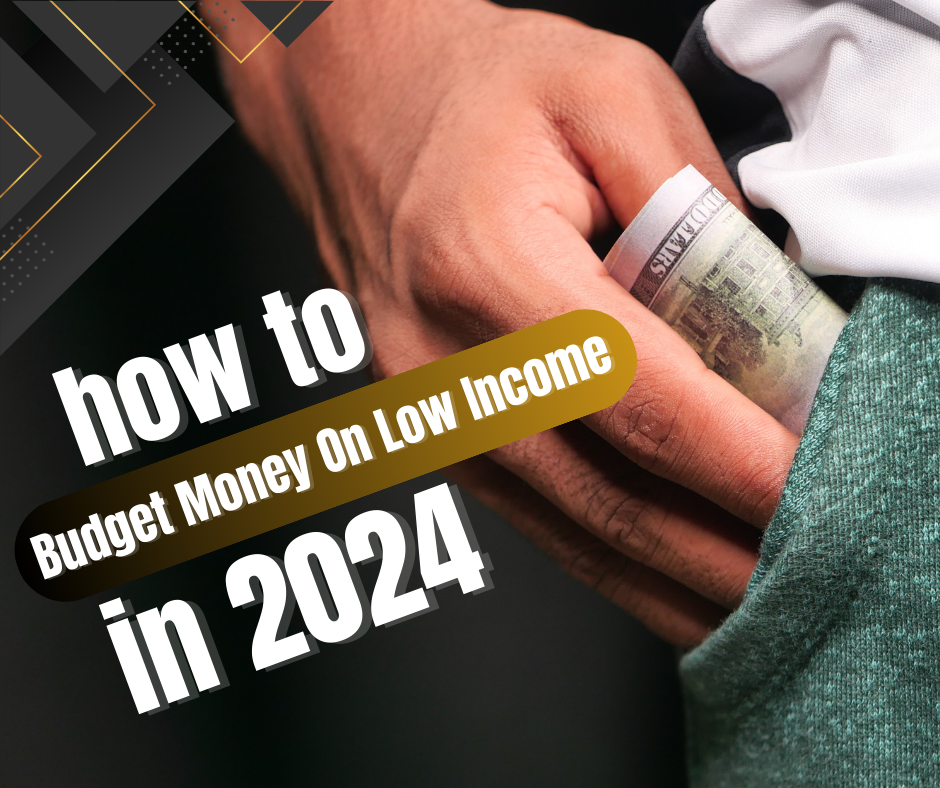How to budget money on low income In 2024

How to Budget Money on Low Income: Smart Financial Strategies for 2024 Managing money on a low income can feel overwhelming, especially with rising living costs and unexpected bills. This article is crucial because it offers practical tips and strategies to help you take control of your finances in 2024, regardless of your income level. By not reading this, you risk missing out on valuable advice that could make your financial life easier and more manageable. Let’s dive in to explore how you can budget effectively, set realistic financial goals, and find ways to cut costs and boost your income. In Introduction: Low income budgets can seem like a difficult chore. Making ends meet can feel almost difficult with the growing cost of living and unanticipated bills that pop up all the time. But don’t panic; with some smart ideas and some preparation, you will be in charge of your money and make sure you have enough to meet your demands. This book will explore doable advice and strategies to enable you to properly budget for a low income in 2024. We have you covered whether your goals are debt management, revenue increase, or spending reduction. Knowing Your Economic Situation You have to know where you stand financially before you can build a good budget. Examine your money sources first. This covers your pay, any side work, government benefits, and any consistent revenue sources. Finding and classifying your expenses comes next once you know exactly how much you make. Look over your bank statements and classify your expenditure. Sort your spending into needs (such as electricity, groceries, rent) and non-needs (like dining out, entertainment). This will enable you to find places where you might cut back and see where your money is going. Establishing Personal Objectives Good budgeting depends on well-defined financial goals. Objectives inspire you to aspire high and keep you driven. First separate short-term from long-term objectives. While long-term goals can be purchasing a house or preparing for retirement, short-term goals might be paying down a credit card or saving for a little emergency fund. Make sure your objectives are SMART—specific, measurable, attainable, relevant, time-bound. Say, for instance, “I want to save $500 in the next six months for an emergency fund,” instead of “I want to save money.” Making a budget plan There are numerous ways to budget; the correct one for you will rely on your financial circumstances and personal preferences. Here are some well-liked choices: Allocate 50% of your income to needs, 30% to wants, and 20% to debt payback under the 50/30/20 Rule. This basic guideline guarantees enough savings and helps you control your expenditure. Under zero-based budgeting, every dollar of your income is allocated to a particular expense or savings target until you have zero dollars left. This helps you be deliberate with your money. Using the Cash Envelope System, you take money for particular budget categories and arrange it in envelopes. You cannot spend further in that category after the cash runs out. This can be a good approach to cut overspending. Monitoring Your Spendings Staying to your budget depends on regularly tracking your expenses. From hand-made tracking systems like spreadsheets or a basic notepad to budgeting applications and tools, there are several ways to approach this. Furthermore vital are regular reviews. Set aside time every week or month to review your expenditure and change your budget if need. This will keep you on target and enable early on identification of any problems. Reducing Cost Reducing your spending can help you to budget on a low income the most effectively. Start by noting non-essential expenses and reducing where you can. This could involve eating out less, canceling subscription services, or looking for less expensive entertainment. These ideas help you cut your utility costs: Unplug devices not in use. Change to low-energy light bulbs. Cut heating and cooling expenses with a programmable thermostat. Another major impact can be made with frugal living. Think about mass purchases, discount store shopping, and coupon and sales advantage. Improving Your Salary Should budget cuts prove insufficient, think about strategies to increase your income. This might be freelancing, picking up a side hobby or gig economy job, or looking for part-time employment. Search for chances that meet your calendar and level of ability. If you write well, for example, think about freelancing or editing. If you drive, you might investigate delivering groceries or ridesharing a car. Make sure you also investigate any help and benefits you might be qualified for, like programs for utility bill assistance, food stamps, or housing aid. Control Debt on Low Income Particularly in low income situations, debt can be a major load. First, give high-interest debt first priority so that over time you pay less interest overall. Think about debt consolidation choices, which, usually at a reduced interest rate, enable you combine several loans into one payment. Negotiating with creditors may also help; they could be ready to arrange a more reasonable payment schedule or cut your interest rate. Saving Money for Basics Reducing certain necessary costs will release more of your income for other purposes. The following are some guidelines: Plan your meals beforehand, create a grocery list, and keep to it. Look for sales and apply coupons. Think about generic brands, which are typically less expensive than name brands yet still quite decent. If your rent is very costly, think about looking for a roommate, moving to a more reasonably priced area, or haggling with your landlord for a reduced amount. Save money on transportation by, whenever at all possible, carpooling, public transit, biking, or walking. If you need a car, think about saving money on purchase and insurance by looking at used ones. Creating a Fund for Emergencies Even on a low income, you really should have an emergency fund. It offers a financial safety net for unanticipated costs as car maintenance or medical bills. Start small if you must. Try to save merely $5 or $10 a
